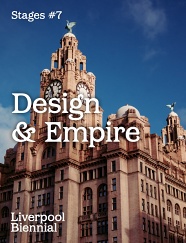
Designing Brazil Today
Frederico Duarte

Photos of How to Pronounce Design in Portuguese: Brazil Today, an exhibition curated by Frederico Duarte and organised by MUDE at the Calheta Palace, Lisbon, 2017. Installation views. Photo: Luisa Ferreira.
Photos of How to Pronounce Design in Portuguese: Brazil Today, an exhibition curated by Frederico Duarte and organised by MUDE at the Calheta Palace, Lisbon, 2017. Installation views. Photo: Luisa Ferreira.
In my conversation with Mohamed Elshahed and Emily King during Liverpool Biennial’s Design & Empire [working title] weekend, we highlighted the underlying tensions of our respective work as curators on Egyptian and Brazilian design at the British Museum and V&A Museum. The following essay was written for a catalogue published some months after my exhibition How to Pronounce Design in Portuguese: Brazil Today for MUDE, Lisbon, 23 September to 31 December 2017.
Although they share a history and a language, the 10 million citizens of Portugal[1] and 208 million citizens of Brazil[2] know very little about each other. What we know is usually based on testimonies and stereotypes passed on by generations of immigrants and emigrants, or in fictions told in books, music, movies or telenovelas.[3] Except for the occasional headline, Brazilian and Portuguese media do not publish, in a sustained way, news or analysis of the political, economic, social or cultural life in the other ‘sister country’. Even with the popularisation of digital media and social networks, there is currently no single periodical with transatlantic ambition, distribution or readership. The lack of a shared publishing market makes it impossible to find a Portuguese book in Brazil and vice versa. And few places can be found in Portuguese and Brazilian cities dedicated to the transmission and discussion of knowledge, in a regular, well-publicised way, about what’s it like to live on the other side of the Atlantic.
Researcher-curator-researcher
In 2008, I chose Brazil as the subject of my master’s thesis. I knew very little about the country beyond what any middle-class, urban and relatively well-informed Portuguese citizen knows: news stories, telenovelas, songs, celebrities, landscapes. I chose to know more at a time when the country was making headlines for the best reasons: the recently announced 2014 Football World Cup and the 2016 Rio de Janeiro Olympics, the discovery of large oil reserves, record GDP growth, unprecedented social mobility and a greater role in an increasingly multipolar world. I wanted to know what it’s like to be a designer in Brazil today.
Even though I was living between New York and Lisbon, starting my research wasn’t easy. I couldn’t find many books, magazines or references about Brazilian design at the time. The information I found online was available, as always, in a scattered and fragmentary way. So in 2009, I decided to take a one-month trip to Brazil. In the seven cities to which I travelled – São Paulo, Rio de Janeiro, Belo Horizonte, Recife, Curitiba, Porto Alegre and Bento Gonçalves – I interviewed over twenty-five product and furniture designers (for this was the disciplinary scope of my research). At the time, I kept an English-language blog, where I posted short profiles of the people I met during the trip: designers, journalists, curators, students, researchers.
In 2014, I started a PhD research project at the Victoria and Albert Museum and Birkbeck, University of London. This project focuses on the contemporary challenges for Brazilian design and aims to determine a collecting policy of design from Brazil for an international design museum. This could be a museum such as the V&A, the world’s oldest and largest design museum, where just over twenty objects in its collection of two million-plus items can be categorised as designed in Brazil or by Brazilian designers. Or it could be a museum like MUDE, a much more recent museum created around the Francisco Capelo collection, a small but significant collection of furniture and fashion by some of the major authors in their respective areas, some of whom are of Brazilian origin.
My research approaches design as an activity beyond its more conventional disciplines, such as posters, furniture, or haute couture, which are still overrepresented in histories, museum collections and in design’s overall discourse, both inside and outside academia. It also aims to go beyond the formal, symbolic and discursive qualities of many of the artefacts found in most decorative arts and design histories and museum collections. Such artefacts, as the American anthropologist Keith M. Murphy describes in his ethnographic study of Swedish design, are primarily objects thought by and for an elite:
One of the chief characteristics of most scholarly treatments of design is a tendency to focus on elite designers and their work – names and images that for various reasons rise to the surface of public consciousness. While elites certainly do exert a tremendous amount of influence on the practices, discourses, and emblems of Swedish design – or of any design tradition, for that matter – there is much more going on both ‘on the ground’ and ‘in the air’ that powerfully contributes to making things mean. Indeed, examining ‘design’ as a sociocultural formation through a framework predominantly based on elites and the relatively restricted domains in which they operate does not capture the broad reality of designing in action.[4]
Considering that Brazil holds fifth place in world population and internal market indexes, but also the tenth in social inequality, this research addresses precisely the moment in the country’s history when much more started ‘going on’, as Murphy would say. Thanks to economic growth, an increase in the minimum wage and social policies, Brazil saw unprecedented social mobility, an unheard of increase in consumption and also significant attainment of rights. Particularly in the period between 2004 (when the Bolsa Família conditional cash transfer program was created[5]) and 2014 (when the biggest recession ever to hit Brazil began), a new and revolutionary consumer base was created: the so-called C class, or New Middle Class (NMC).
NMC figures, titles and interpretations are multiple, even controversial. Its individuals are placed, in terms of income, below the upper (A) and middle (B) classes and above the classes of poor and destitute individuals (D, E). However, official statistics indicate that in 2015 the NMC represented over half the country’s population: between 110 and 115 million citizens. Even with the recession that began in 2014, the way in which Brazilians buy, travel, communicate, find entertainment, use public space and even express themselves politically have changed considerably.
How have Brazilian designers reacted to these significant shifts in the lives not of the elite, but of most of their co-citizens? The search for answers to this question, both domestically and internationally, signals the local impact and global appeal of Brazil’s consumption in three ways.
The first one emphasises how the aspirations, needs, choices and habits of the individuals that make up this consumer market play an increasingly important role in a world system of production of wealth and meaning. Knowing that, according to a 2014 prediction from research firm Euromonitor, Brazil would replace Japan as the world’s second-largest beauty and personal-care market after the United States (an ambition only thwarted by the 2014–17 recession), how can we rethink the national, but also worldwide impact in the design of packaging, fragrances, brands, campaigns, as well as systems for extracting ingredients and manufacturing, distributing, marketing and consuming these products within this market?
The second highlights Brazilian designers’ remarkable degree of adaptability in the face of Brazil’s economic, social and ethnic heterogeneity, as well as its diverse geography, climate and gastronomy, allied to the country’s persistent economic instability, infrastructural inadequacy and bureaucratic complexity. This adaptability has been seen as an added value of these designers, whether in their approach to specific issues afflicting the citizens and consumers for whom they work or, particularly in the context of multinational consumer products companies, on a global level. This is especially true at the level of countries of the so-called ‘Global South’, where issues such as inequality and racial/social inclusion, literacy and access to information, urban mobility and sustainability, demography and ageing are amongst their main challenges.
The third way recognises that the world in which we live today is becoming increasingly like Brazil: more miscegenated and unpredictable, but also, with the triumph of neoliberalism, more privatised and unequal. Some of the solutions found by designers in Brazil for their customers, taking into account the country's market and context, reveal strategies and tactics – from creating desire for the car to the design of urban mobility alternatives through frugal innovation – that are potentially applicable to other markets and territories.
Analysing the practice of design in all its complexity of disciplines, dimensions and applications, this research considers both the intention of designers and the impact on consumers of a set of Brazilian projects. The choice of projects and their respective analysis follows four thematic lines, applicable both to Brazil and to other nations: public space and the public good, consumption and inclusion, discourses and identities, innovation and collaboration. The aim of this research is to demonstrate, through the establishment of a collection of artefacts and projects, the local impact and global appeal of contemporary Brazilian design.
How to pronounce what in Portuguese?
In 2015, shortly after I began my PhD research, I was invited by the director of MUDE, Bárbara Coutinho, to curate the follow-up to an exhibition she had curated in 2014, a survey of Portuguese furniture design over half a century, titled How to Pronounce Design in Portuguese? The exhibition I was invited to curate, also dedicated to design in the Portuguese-speaking world, would approach, under the same title, the largest Portuguese-speaking country: Brazil. The exhibition was unusual, unique even, in the history of exhibitions that deal with design in the framework of a nation-state. Firstly, it was promoted by a museum outside the nation in question. Secondly, it was curated by an independent curator. Thirdly, in its conception, production and communication, it did not have any kind of institutional support nor any public or private sponsorship from Brazilian governmental entities or corporations. These characteristics make this exhibition not, as design exhibitions often are, a ‘state’ exhibition – such as (P): Design de Portugal 1990–2014, of which I was assistant curator, intended to celebrate the official visit of the President of Portugal to Italy in November 2014 – nor an ‘industry and trade’ exhibition – such as those promoted by entities dedicated to the dissemination and promotion of national export like the Portuguese Trade & Investment Agency (Aicep Portugal Global) and the Brazilian Trade and Investment Promotion Agency (Apex-Brasil).
It is customary for ‘state’ and ‘industry and trade’ design exhibitions to emphasise either the traces of identity or the aspects of technological innovation and commercial appeal in design, understood in both cases as ‘national’. In other words, what makes design ‘ours’ and what will make it sell abroad. It is also common for these ideas or arguments to be attributed to artefacts of original or extraordinary appearance, rarefied existence, or high cost (the ‘framework predominantly based on elites’ mentioned by Murphy). These choices are also usually limited to projects whose authorship is directly and easily attributed, with considerable emphasis being placed on ‘works’ created by ‘authors’, as opposed toprojects whose creation is based on a complex collective decision-making process, often shared between customer and (design) service provider, or even of unknown authorship.
However, it is these anonymous and humble things, as described by the British anthropologist Daniel Miller, that make up the life and the culture of a people:
Things, not, mind you, individual things, but the whole system of things, with their internal order, make us the people we are. And they are exemplary in their humility, never really drawing attention to what we owe them. They just get on with the job. But the lesson of material culture is that the more we fail to notice them, the more powerful and determinant of us they turn out to be. This provides a theory of material culture that gives stuff far far more significance than might have been expected. Culture comes above all from stuff.[6]
Notwithstanding the advantages of these approaches in political (propaganda) and economic (advertising) terms, they err in their disinterest in the contemporary material culture of a people, presenting a particularly conservative, not to say poor version of design practice. They err as well by demonstrating a fixation on identity discourses or even a problematic exaltation of national identity through design. A disproportionate attention is given to characteristics considered to be identifying features of a particular people or nation – formal and material elements, references to history, language or ‘tradition’ – without questioning what – or rather, whose – identity we speak of when designing nationhood.
In Brazil, a nation whose white-minority population still holds disproportionate access to wealth and property, education and employment, power and law, but also the practice and discourse of design, claiming and seeking national identity in a particular artefact is something that must be done with extreme sensitivity. In this appeal I call on a thought from the French philosopher Paul Ricoeur:
The term ‘recognition’ seems to me much more important than that of ‘identity’ which is the focus most of the time of the debate on multiculturalism. In the notion of identity there is only the idea of sameness, whereas recognition is a concept that directly integrates otherness and allows a dialectic of the same and the other. The demand of identity always involves something violent with respect to others. The search for recognition, on the contrary, implies reciprocity.[7]
How, then, to present in this exhibition, the first I have curated on an individual level, a more current and comprehensive version of contemporary design in a country like Brazil, in the context of a museum (and not, for example, a trade fair) and in the capital of a foreign nation that shares with Brazil a history and a language? And how to appeal, in this presentation, to the ideas of recognition and reciprocity defended by Ricoeur?
I started by responding to this challenge by proposing an exhibition that placed knowledge over contemplation. I also proposed, assuming that any design exhibition is an introduction to this activity, that this one should approach the greatest number of design disciplines and thus expose its fascinating complexity, exemplarily described here by the Brazilian design historian Rafael Cardoso:
Design is the product of three great historical processes that took place in an interconnected and concomitant way, on a world scale, between the 19th and 20th centuries. The first such process is industrialisation: the reorganisation of manufacture and distribution of goods to cover an ever larger and more diversified range of products and consumers. The second is modern urbanisation: the expansion and reapportion of population concentrations in large metropolises, of over one million inhabitants. The third can be called globalisation: the integration of trade, transport and communication networks, as well as the financial and legal systems that regulate their operation. All three processes face the challenge of organising a large number of disparate elements – people, vehicles, homes, shops, factories, road networks, states, laws, codes and treaties – into harmonious and dynamic relations. Together, this great historical meta-process can be understood as a movement to integrate everything with everything. In the broader conception of the term ‘design,’ the various ramifications of the field arose to fill in the intervals and separations between the parts, supplying gaps with design and interstices with interfaces.[8]
This exhibition should also distant itself as much as possible from what so many design exhibitions, whether ‘state’, ‘industry and trade’ or even ‘museum’, tend to become: a sort of large furniture shop with no price tags, where visitors, given no more information about the things placed in front of them than author, title, date and materials, are effectively deprived of knowledge and left to contemplation alone. I find the so-called ‘design icon’ exhibition doubly unsatisfying as a curatorial exercise. On the one hand, being in the presence of so-called iconic design examples, which as the term suggests are valued for their image, a visitor is invited to examine, ‘in the flesh’, things already seen on a page or screen – in general, well-photographed forms shown against a white background. That examination is at best uninteresting, at worst banal. On the other hand, a gallery of three-dimensional images where the originality, aesthetic quality or other formal values of an artefact are overvalued, omits what is relevant in a specific project beyond the image of the thing that results from it. That is, the intellectual act underlying in its design. This is perhaps what a design exhibition is about. Therefore a non-iconic design exhibition that seeks to reveal this intellectual act requires an approach that shows the context and/or process involved in the design of a particular artefact, while interpreting the intentions of its proponents and/or the impact on consumers. It may not be an easy thing to do, but it's worth a try.
Finally, this exhibition should provide a significant and lasting contribution to bringing the design communities of Brazil and Portugal together through what unites us: the Portuguese language.
Whether working as a journalist, critic, researcher or curator, my main approach has always been one and the same: talk to people. Rather than drawing up a ‘shopping list’ of objects, products and projects to be brought from Brazil to Lisbon, I wanted to meet, talk and learn with some of the main protagonists in Brazilian contemporary design.
So in 2016, I went on a second research trip to Brazil. Ninety-two days, thirty-one flights, fourteen cities – São Paulo, Rio de Janeiro, João Pessoa, Campina Grande, Recife, Caruaru, Belém, Manaus, Tefé, Florianópolis, Belo Horizonte, Curitiba, Porto Alegre, Farroupilha – and the Mamirauá Sustainable Development Reserve, deep in the Amazon forest. Throughout this trip I conducted ninety-six interviews with a wide range of design professionals, students and researchers, as well as other agents such as curators, businesspeople, journalists, social scientists, consumption experts, non-governmental organisation and public-institution representatives.
The information gathered from these so-called primary sources, as well as my comings and goings between them throughout the Brazilian territory, and subsequent conversations by Skype and emails or messages, informed the selection of projects both for this exhibition and for a possible museum collection put forward by my doctoral research. It also allowed me to collect and reflect on the stories told by these people and by the things they create. When eschewing banal contemplation and aspiring to the transfer of meaningful knowledge and essential recognition, as the Nigerian writer Chimamanda Ngozi Adichie once said, ‘Stories matter. Many stories matter.’[9]
Brazil, yesterday and tomorrow
To the title of the previous exhibition I removed the question mark and added the subtitle Brazil Today. Instead of elaborating a more or less exhaustive survey of a specific area of design in a particular country, market, territory, or culture, I wanted to return to my first research question: ‘What is it like to live and work as a designer in Brazil today?’, and confront visitors to the exhibition with answers to that question. The somewhat paradoxical use of the word ‘today’ for the subtitle of a design exhibition that is neither ‘state,’ ‘industry and trade’, nor a ‘design icon’ exhibition comes from Jamer Hunt’s reflection on the tension between anthropologists and designers:
While social historians, anthropologists do build up their interpretative snapshot of a culture by grounding their narratives in a series of flashbacks to recent events, occurrences, interviews, or observations. Put another way, ethnography is rarely projective: it does not speculate on what might happen next. Its focus is the present, built upon a series of past ‘present’ moments.[10]
I could have taken an ethnographic approach to design practice and results in Brazil, i.e. how design shapes and is shaped by contemporary life in this country. Such an approach could, however, easily have led to an exhibition about material culture, or the things with which people live in Brazil, rather than being an exhibition about design, i.e. about the role designers in Brazil have played in commenting on, contributing to and influencing their social, economic and cultural context. Continuing with Hunt’s reflection:
Design, on the other hand, is a practice of material and immaterial making, but its mode of being-in-the-world is generative, speculative, and transformational. A designer must project forward into a potential future to launch an artefact that will, if all goes right, transform a near present and rewrite the future. Whereas an ethnographer works in ever greater detail to ensure that she has got the present ‘just right’, the designer uses the present – and uses it often imperfectly – as a provisional leaping off point for reimagining possible futures. Designers are often quite at ease basing a project on broad assumptions about the world: for example, ‘people are now nomadic, how can we design for mobility?’ Social scientists, however, would want to know what is meant by nomadic, how nomadic, under what conditions, and by what criteria? Designers, by and large, use that assumption as a necessarily imperfect starting point, and getting things exactly right is not the point. The point is to move from that assumption into innovative ways of configuring future styles of living. What matters is the extent to which the project’s outcome reconfigures our sense of future possibilities.[11]
As an exhibition tangential to a research project, How to Pronounce Design in Portuguese: Brazil Today presented projects developed in the twenty-first century by Brazilian individuals or collectives, highlighting the reflections, actions, choices and intentions of each designer in the recent past and for the near future. This is, therefore, an exhibition about Brazil and design in the twenty-first century. It is therefore about a country with a continental territory, a multi-ethnic population, the greatest biodiversity on the planet, the world’s fifth largest internal market and a brutally unequal society. It is also about a century that witnessed a period of economic growth, democratising of consumption, social mobility and unprecedented attainment of rights, but also a prolonged recession and a severe political-institutional crisis. And it is about a discipline that in our century assumes such a complexity of breadth and depth that any effort to restrict it to categories such as communication, furniture, fashion or architecture would be as reductive as it was useless. Like Brazil, design today challenges any categorisation or simplification. Instead of simplifying, this exhibition explores and celebrates the current complexity of a country and an activity.
Perspectives
The Brazil Today exhibition was based on the curatorial concept of 100 design perspectives – a round number, divided into two: fifty projects and fifty books. The term ‘perspective’ emphasises the subject, not the object, as the protagonist of the design process. Each of the artefacts, products, interfaces, and also the selected books for the exhibition was presented as the accomplishment of the process through which Brazilian designers – whether individual or collective – interpreted or intervened in their contexts with a particular project. Each represented designer was thus seen as an active agent in his or her nation’s design but also, in the case of designers working outside Brazil or for a foreign client, in expanding the boundaries or even questioning the relevance of national identity in design.
This approach does not seek to define or propose a ‘top-down’ national reading or identity for design, since these are often associated with modernism, national elites or totalitarian states. It seeks instead to demonstrate that this reading is today not only fruitless but undesirable, by showing projects with which Brazilian designers have questioned, ‘from the bottom up’, hegemonic discourses, contested identities and power structures within and beyond their country’s borders.
As described in the pages dedicated to these fifty achievements, we learn that each one of them resulted from a (design) service provided, an initiative created, research conducted or a position assumed by one or more designers. Through an analysis and an interpretation of their work, and their positions, we discover how Brazilian designers have promoted but also questioned ideas such as consumption and inclusion, memory and heritage, public space and citizenship, innovation and collaboration, progress and protest.
An exhibition or a book about the things that result from these acts is not limited to extolling their author’s genius, the eccentricity of their form or the virtuosity of their making. On the contrary, it shows why they exist, what they’re for and why they matter both to the Brazilian people and to us. It should also show when they fail. Not all design stories are stories of success; each of them can and should be addressed as a testimony both to the potentialities and limits of the profession.
As the British design theoretician Damon Taylor describes in his analysis of the design artefact as exhibition subject and object: ‘The essential feature of design, if the word is to have any substance at all, is that it makes an appeal to function; that to one degree or another, if something is to be categorized as design, it must have at the very least a nominal purpose beyond its status as an object of contemplation.’[12] And, more importantly, ‘what makes design design is the fact that it is not autonomous; it must by definition at the very least allude to a life outside of the hermetic confines of the modernist gallery’.[13]
Each perspective, or each action, was thus exhibited not as a unique, rare or precious object of contemplation, but through one of countless reproductions or multiple representations of a given design. Many of these reproductions and representations were developed especially for the exhibition by some of the more than 200 represented designers and clients. All of them were presented in the rooms of the Calheta Palace, and on the pages of this catalogue, accompanied by short and extended (150 words or so) captions. These interpretive texts allowed visitors to progress from contemplation to knowledge by offering information on the designer’s intentions and, in several cases, providing a critical reading of each project’s strengths and weaknesses. Other perspectives were exhibited alongside additional interpretive media such as videos, infographics, news clippings or Instagram feeds. In this catalogue, they can be found in the exhibition photographs and described in each project’s text.
In order to provide the appropriate experience and reading of each project in the exhibition, I worked closely with two teams of designers and friends – The Home Project (Kathi Stertzig and Álbio Nascimento) and Joana & Mariana (Joana Baptista Costa and Mariana Leão). Together, we discussed and designed ways to create an environment in the Calheta Palace – a building that in its history, architecture, interior decoration and contents is anything but a modernist design gallery – suitable for contemplation, but above all for the fruition of knowledge.
The other fifty perspectives included in the exhibition are things that visitors can not only see and thoughtfully discover, but also buy. The fifty selected books on Brazilian designers and design made up a shop thought from the first moment as the exhibition’s conceptual centre. This sort of Noah’s Ark of knowledge generated about design in Brazil would offer for sale, for the first time in Portugal, over 1,000 books from the most diverse areas and themes. It would be a unique and unprecedented opportunity for the Portuguese design community, long deprived of books published in Brazil through the absence of an editorial market shared between the two nations, to access this knowledge.
As a curatorial gesture and a service to a local community of students and professionals, this temporary bookshop sought inspiration in the permanent, contemporary art bookshop created by curator Miguel Wandschneider at the Culturgest exhibition centre in Lisbon in 2011. By offering a thoughtful selection of titles at reduced prices, this gallery-with-a-till has functioned, even after Wandschneider’s departure from the institution in 2016, as a remarkable extension of its exhibition programme. Made possible through a partnership between MUDE and Fnac Portugal, the gallery-with-a-till of the ‘Brazil Today’ exhibition was installed in the noblest hall of the Calheta Palace. With its seventeenth-century, hunting-themed tile panels, high ceilings and eight balconies, it was deemed ideal for this reading-room-bookshop, where visitors could sit among tropical plants, rest and enjoy the Autumn light and the view over the Tagus, but also buy a book and read it.
For logistical reasons, copies of six of the fifty selected titles did not cross the Atlantic. Only one book, Design para um Mundo Complexo by Rafael Cardoso, sold out. Nevertheless, this bookshop fulfilled its three main objectives. The first was to celebrate the work of each book’s author and editor, raising their contributions to design studies and culture to the status of an exhibition-worthy artefact. For that reason, each of the titles placed on the 8-metre-long bookshelf had an extended caption of seventy-five words, justifying its inclusion in the exhibition.
The second objective was to turn a design exhibition from a space of passive contemplation of artefacts to a place of active acquisition of knowledge. In doing so, it critiqued the absence of an editorial market shared between the two Portuguese-speaking nations – and did something about it.
The third objective may have a less immediate but perhaps more lasting consequence: despite the overwhelming amount of information to which we have access, including the Portuguese language, whenever we want to research something, it’s often difficult to know where to start, or with whom to begin a long, fruitful conversation about a subject. Perhaps a project or a book found at the Calheta Palace in the Autumn of 2017, or this one now in your hands, may have helped someone on this side of the Atlantic get started, thus creating a new bond between the two largest communities of professionals and scholars interested in pronouncing design in Portuguese, allowing us, in addition to know more about each other, to recognise each other better.
In their fascinating book Brasil: uma biografia,[14] the historians Lilia Moritz Schwarcz and Heloisa Starling quote the Franciscan friar Vicente do Salvador, considered Brazil’s first historian. In his 1630 opuscule História do Brazil, he concluded that ‘No man on this land is republican, nor cares, or looks after the common good, but only their private property.’[15] Building on his remark, Schwarcz and Starling mention that ‘Since the beginning of that history of five centuries and loose change, a difficult process of building shared forms of power and care for the common good was already evident in the exploration of the lands that would later be constituted as Brazil.’[16] The two scholars suggest a new, less fatalistic interpretation of Vicente do Salvador’s damning and often-quoted words: ‘Contrary to what friar Vicente supposed … there is republican virtue among us. Creating imaginative paths in the building of public life, that is the typically Brazilian remedy to face or, better said, to short-circuit the impasse generated within a society that relies on many encounters and several mismatches.’[17]
This is indeed the main goal of this exhibition organised in 2017 in Portugal, about Brazilian design in the twenty-first century: to show how, by reflecting, interpreting and reacting to the encounters and mismatches of their society, Brazilian designers have created imaginative paths in the building of public life. It also shows us how to create a future that is larger than a country.
This is an edited version of an essay originally written for the catalogue of the exhibition Brazil Today, published by MUDE – Museum of Design and Fashion, Francisco Capelo Collection, in June 2018, reproduced here with the kind permission of the museum.
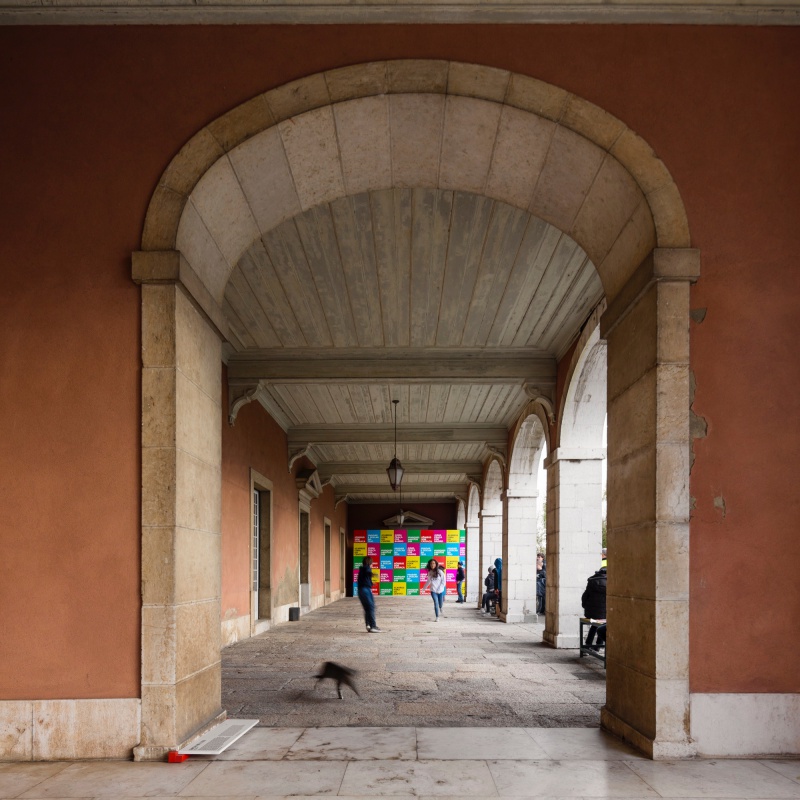
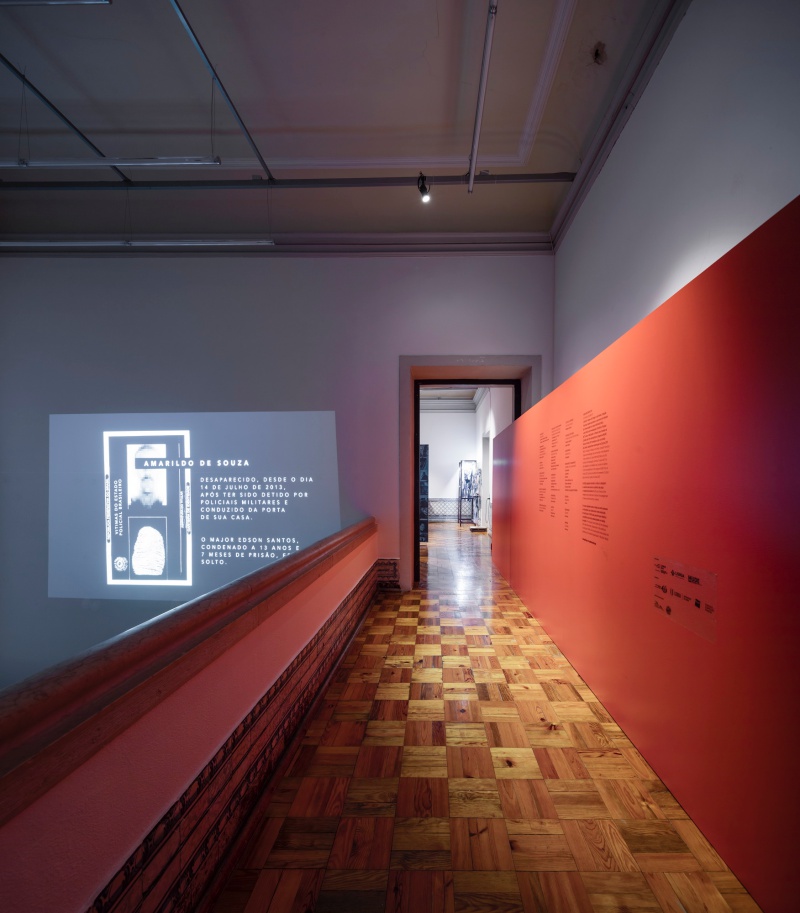
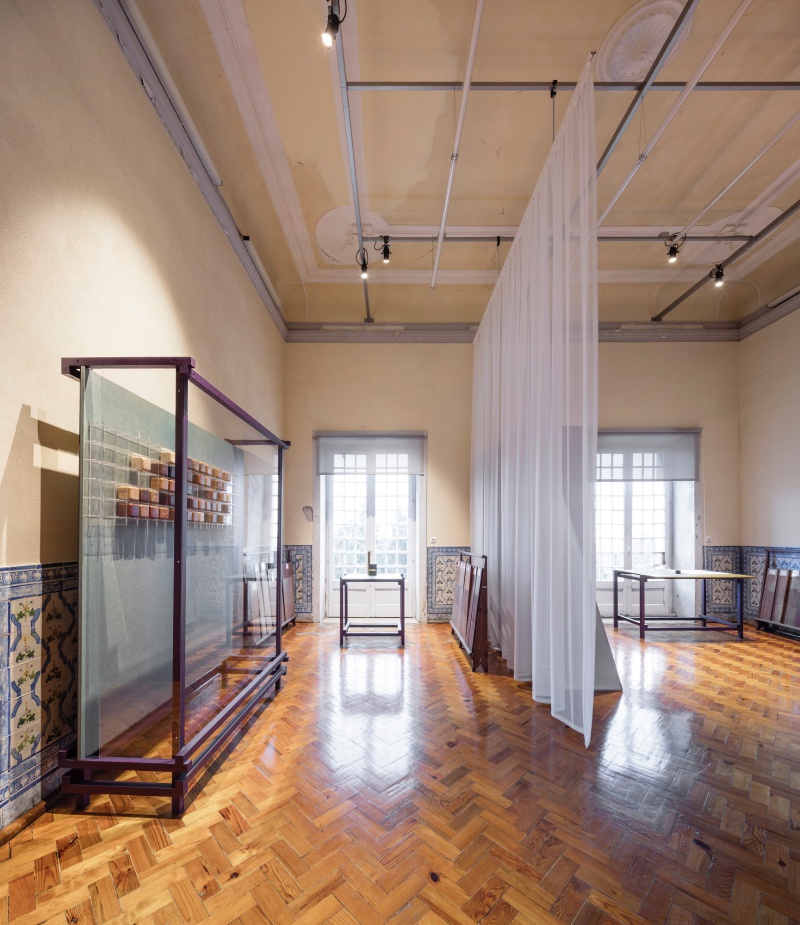

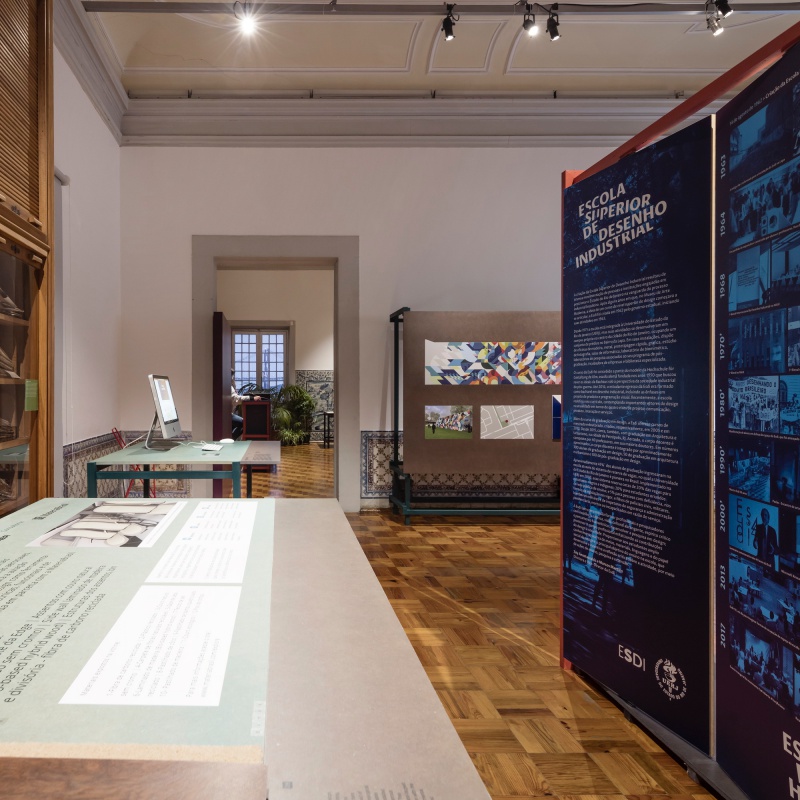
Photos of How to Pronounce Design in Portuguese: Brazil Today, an exhibition curated by Frederico Duarte and organised by MUDE at the Calheta Palace, Lisbon, 2017. Installation views. Photo: Fernando Guerra.
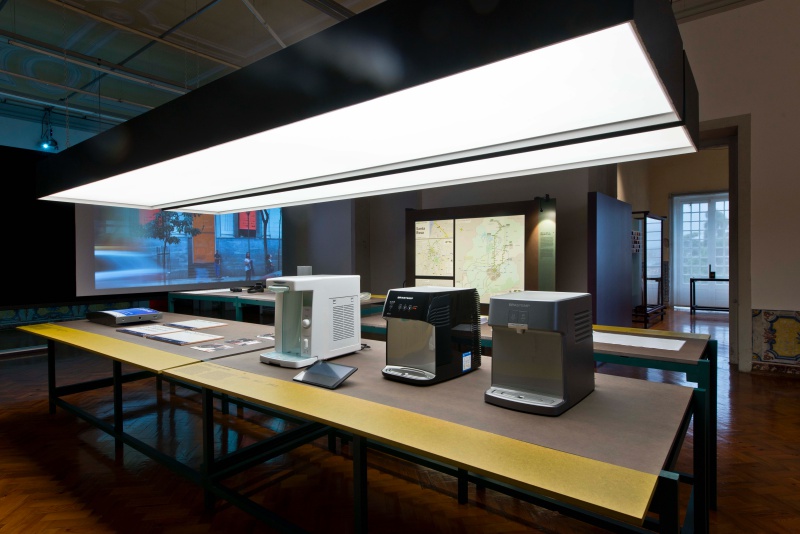


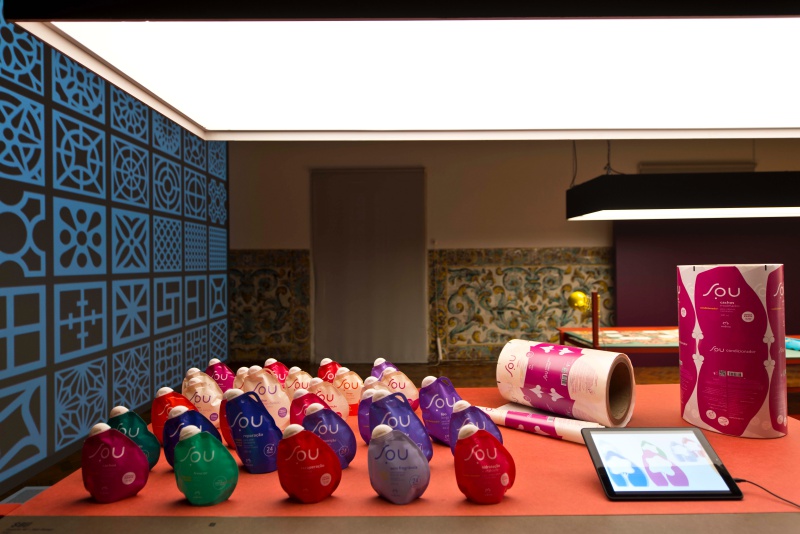
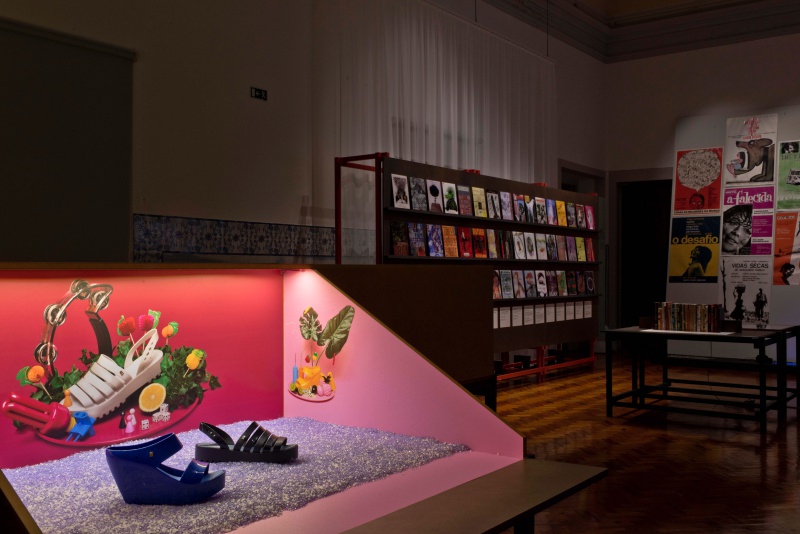

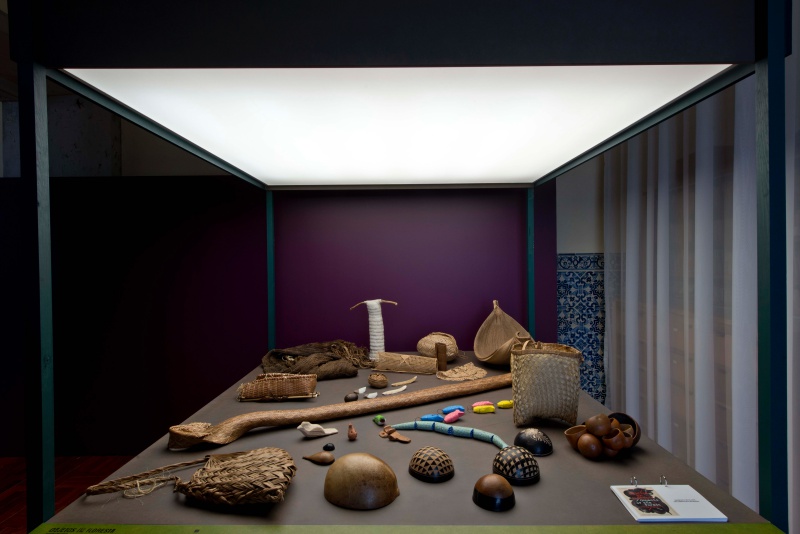
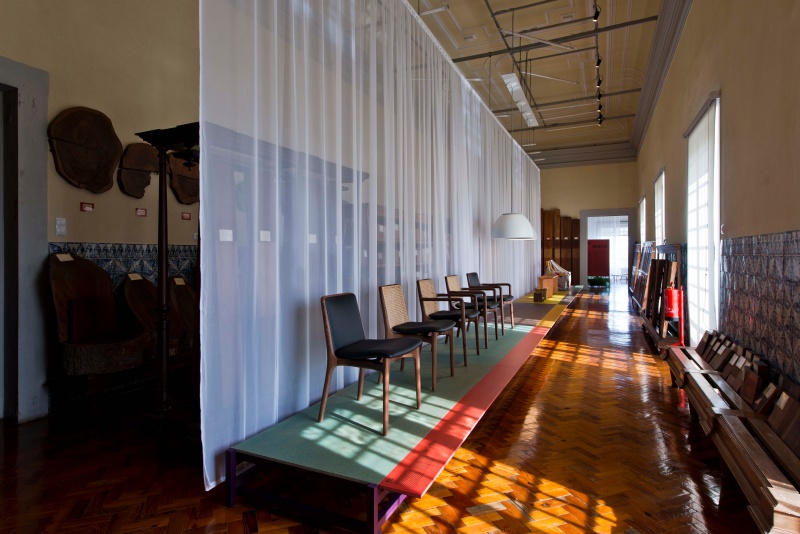

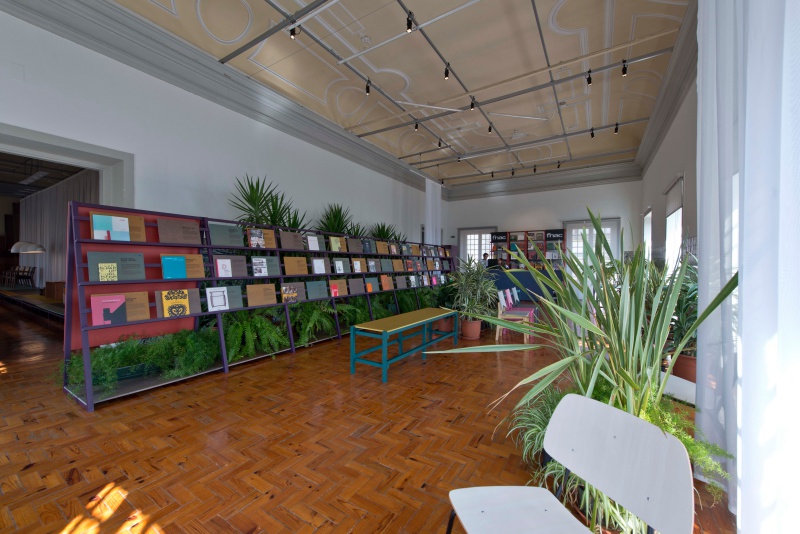
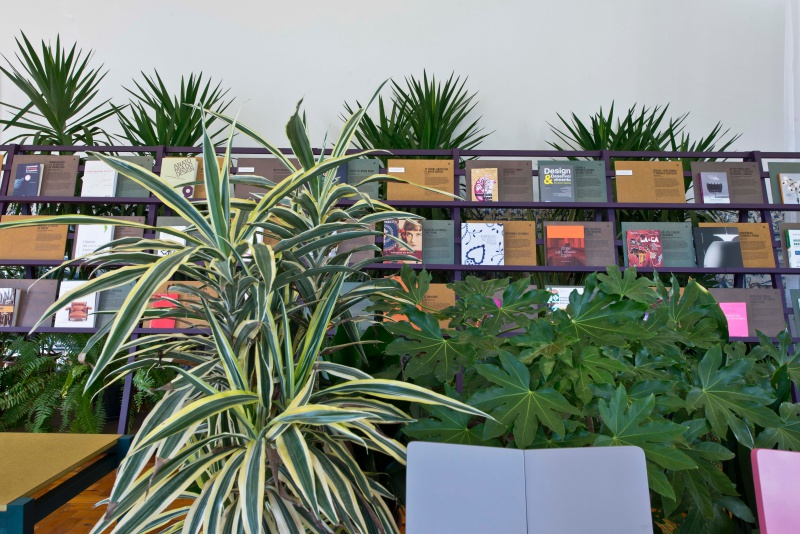
Photos of How to Pronounce Design in Portuguese: Brazil Today, an exhibition curated by Frederico Duarte and organised by MUDE at the Calheta Palace, Lisbon, 2017. Installation views. Photo: Luisa Ferreira.
[1] Instituto Nacional de Estatística (accessed 05.02.2018).
[2] Instituto Brasileiro de Geografia e Estatística (accessed 05.02.2018).
[3] Term for TV soap operas in Brazil.
[4] Keith M. Murphy, Swedish Design: An Ethnography (Ithaca, NY: Cornell University Press, 2015). p. 5.
[5] Jonathan Tepperman’s article in the January/February 2016 issue of Foreign Affairs, ‘Brazil’s Antipoverty Breakthrough’, provides a good analysis of the Bolsa Família programme (accessed 07.02.2018).
[6] Daniel Miller, Stuff (Cambridge: Polity, 2010), pp. 53–54.
[7] Paul Ricoeur, Critique and Conviction: Conversations with Francois Azouvi and Marc de Launay (London: Wiley, 1998). p. 60.
[8] Rafael Cardoso, Uma introdução à história do design (São Paulo: Editora Blucher, 2008, pp. 22–23).
[9] Chimamanda Ngozi Adichie (July 1, 2009), ‘Adichie, Chimamanda Ngozi, The danger of a single story’ (accessed on 09.02.2018).
[10] Jamer Hunt, ‘Prototyping the Social: temporality and speculative futures at the intersection of design and culture’ in Alison J. Clarke, ed. Design Anthropology: Object Culture in the 21st Century (Vienna: Springer, 2011, p. 35).
[11] Ibid.
[12] Damon Taylor, ‘Exhibiting Design Art’, in Liz Farrelly and Joanna Weddell, Design Objects and the Museum (London: Bloomsbury, 2016), p. 94.
[13] Ibid.
[14] Lilia Moritz Schwarcza and Heloisa Starling, Brasil: uma biografia (Lisbon: Temas e Debates – Círculo de Leitores, 2015).
[15] Ibid., p.19.
[16] Ibid.
[17] Ibid.
Download this article as PDF
Frederico Duarte
Frederico Duarte studied communication design in Lisbon and worked as a designer in Malaysia and Italy. In 2010 he completed his MFA degree in design criticism at the School of Visual Arts in New York. As a design critic and curator, since 2006 he has written articles and essays, contributed to books and catalogs, given lectures and workshops, organised events, and curated exhibitions on design, architecture, and creativity. His latest exhibition on Brazil and design in the 21st century How to Pronounce Design in Portuguese: Brazil Today, organised by MUDE, Lisbon’s design and fashion museum, is currently on show till 31 December 2017. Concurrently he is conducting an AHRC and FCT-funded collaborative doctoral partnership research project on contemporary Brazilian design at Birkbeck College, University of London and Victoria and Albert Museum, London, UK.
- Notes on Design & Empire
Joasia Krysa - Learning from Liverpool: An Introduction
Emily King and Prem Krishnamurthy - Empire Remains Christmas Pudding
Cooking Sections - Contents of Ostrich’s Stomach
Paul Elliman - Brown is the New Green
Mae-ling Lokko - Designing Brazil Today
Frederico Duarte - UTOPIA and the Metainterface
Christian Ulrik Andersen - Colophon

